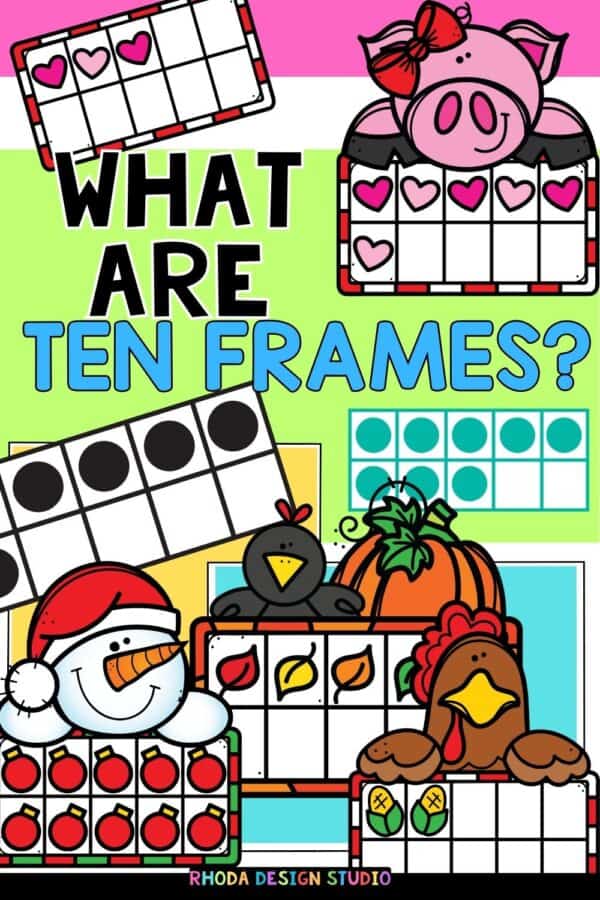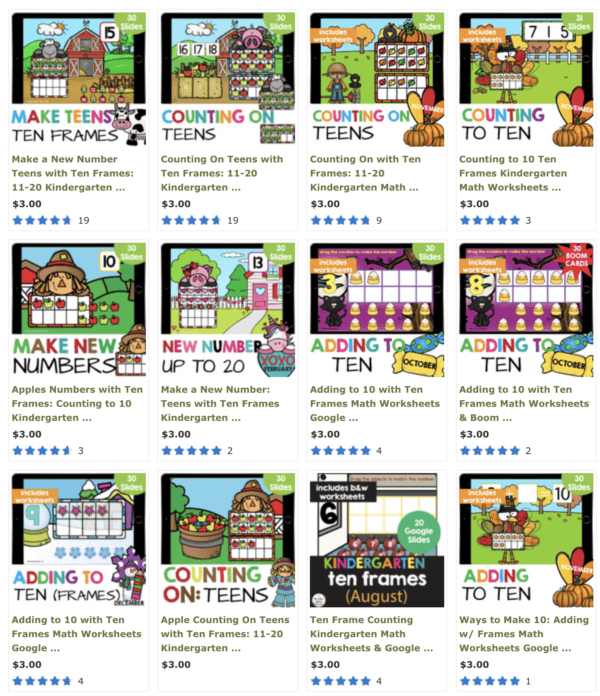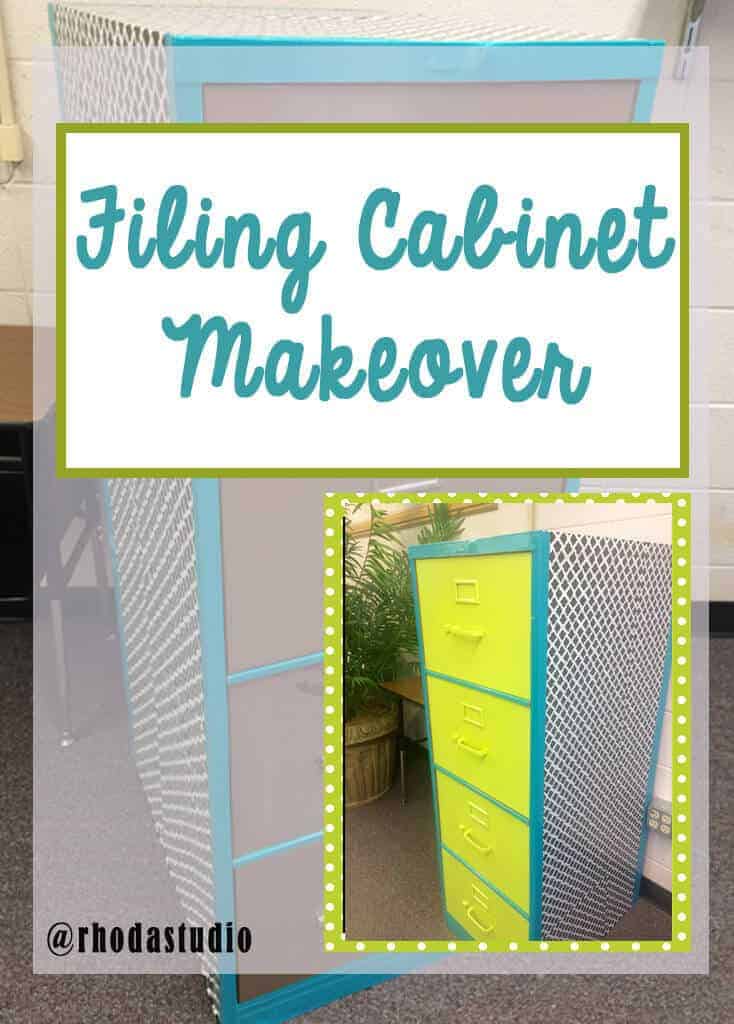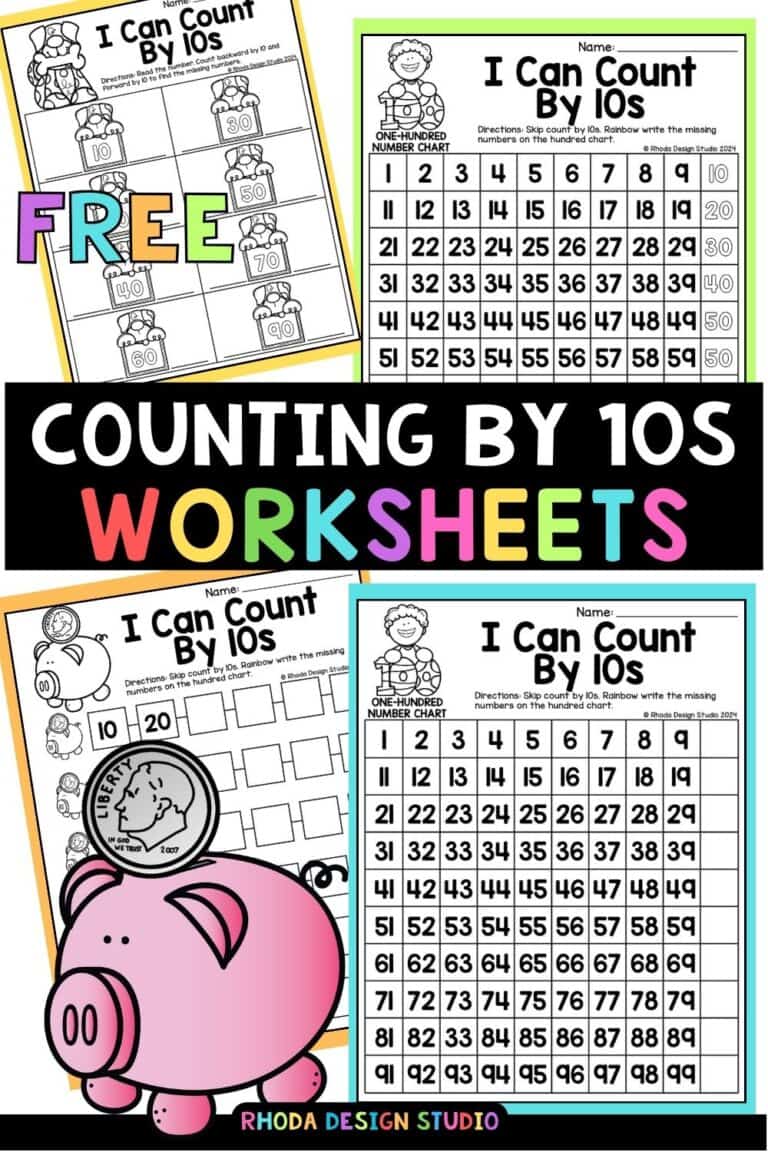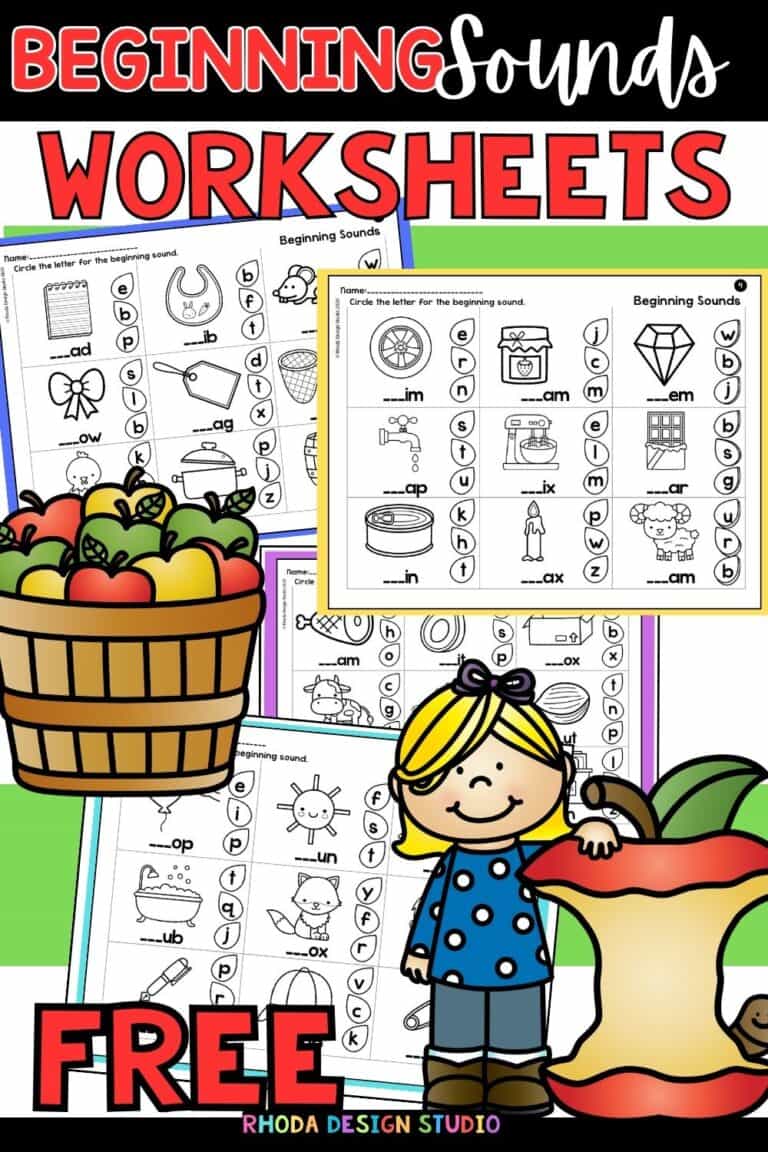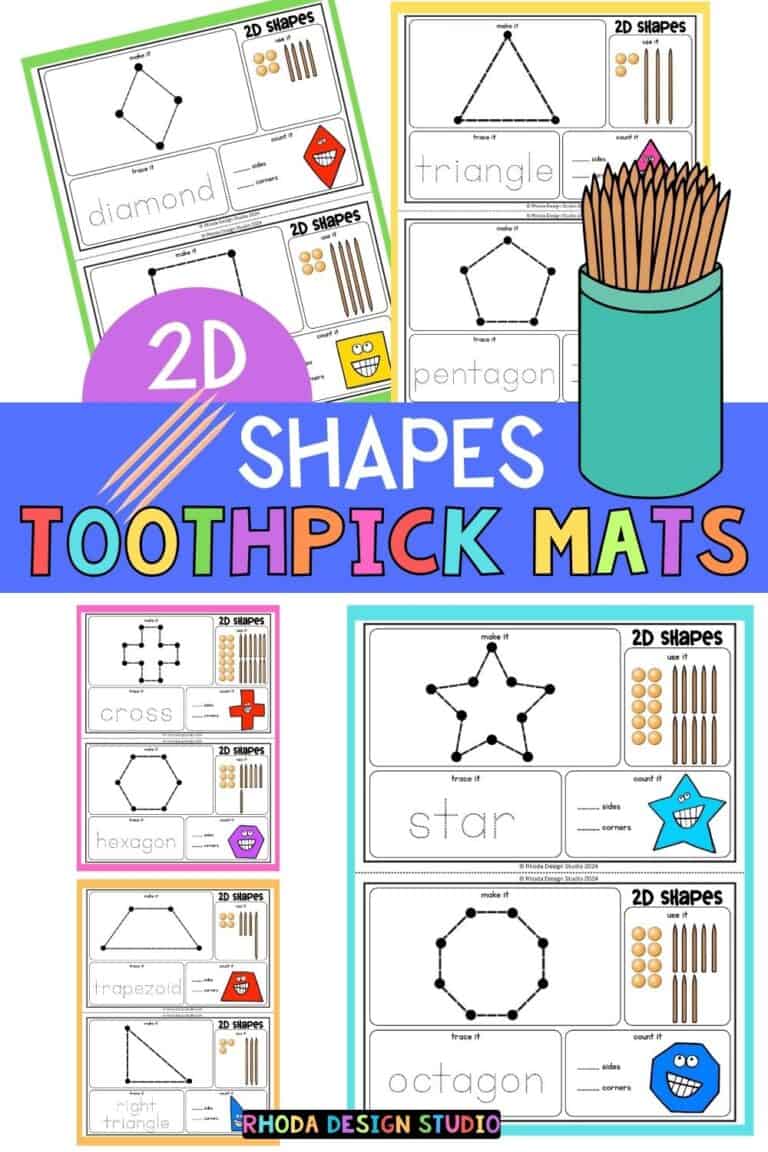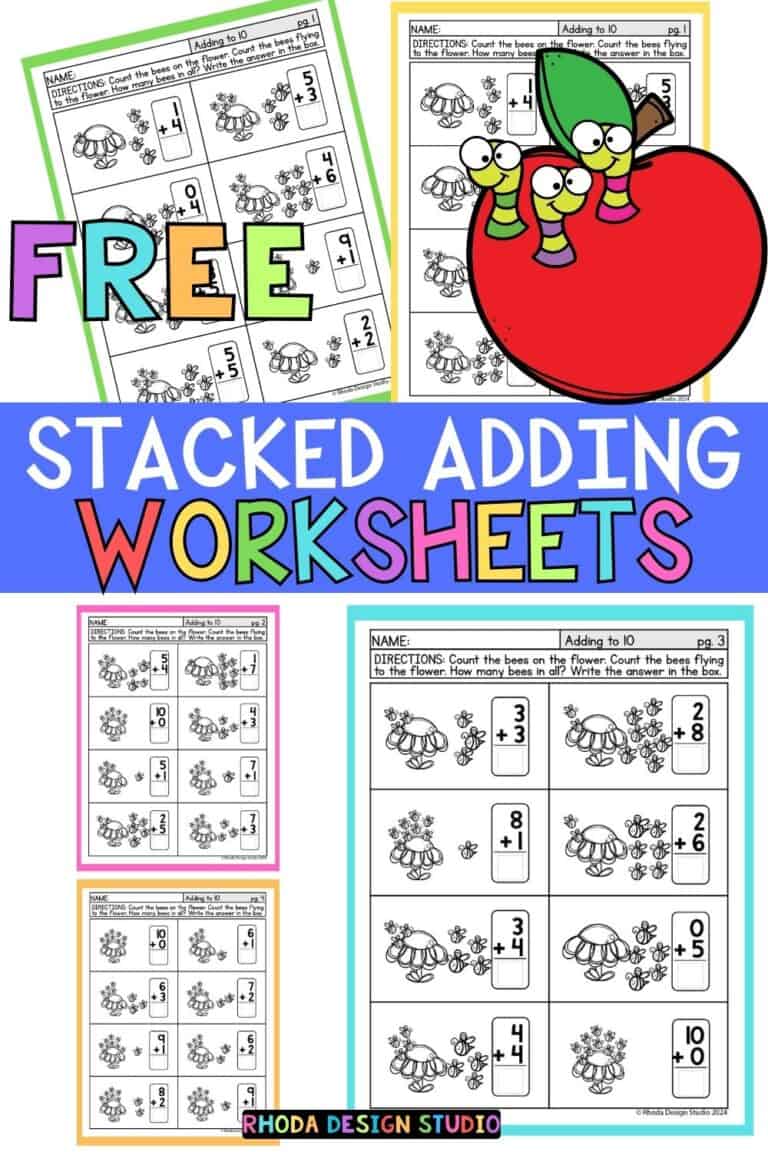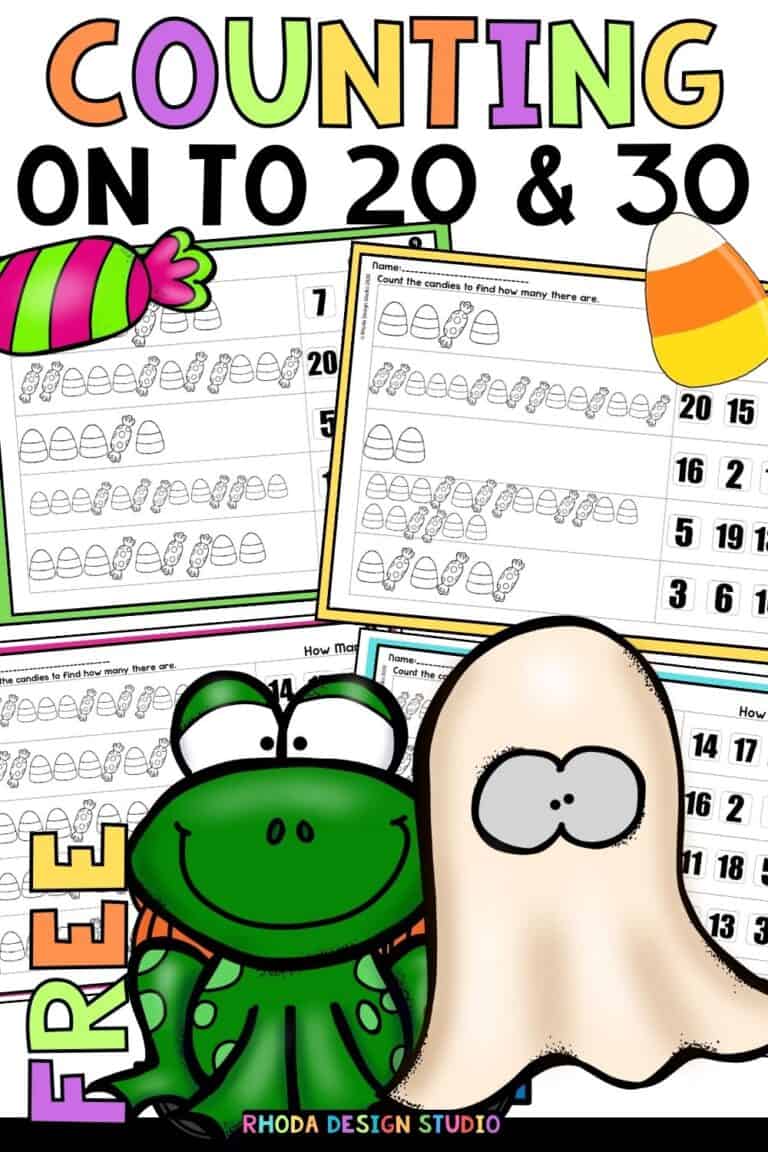What Is A Ten Frame? How to Use Them in the Classroom and Homeschooling
For educators at the forefront of elementary math in the homeschool or classroom setting, the ten frame is like a hidden gem. It’s a powerful visual tool that can transform the way students understand numbers and mathematical concepts. In this blog post, we will demystify the ten frame, exploring its functionality and presenting a variety of ways teachers can integrate these frames into their teaching repertoire to foster a deeper understanding of mathematical principles among their students.
What is a ten frame?
A ten frame is a simple yet versatile mathematical tool used to develop number sense in students. It consists of a rectangle divided into 10 equal squares. Generally, two rows of five squares make up the frame, and the structure within each square can be easily modified to represent different numbers depending on the instructional need.
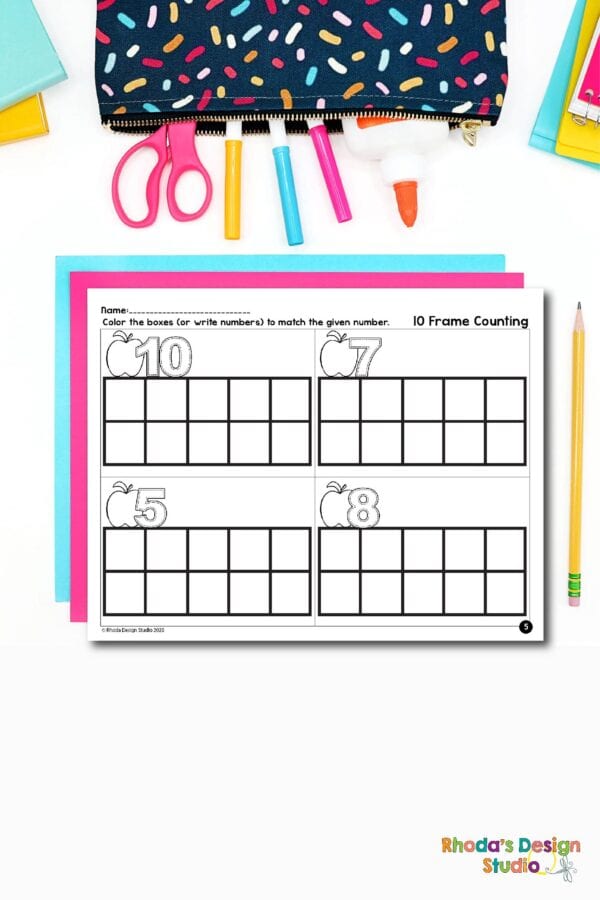
How does a ten frame work?
The beauty of the ten frame lies in its adaptability. It can help students visualize numbers by allowing them to see different ways to break down and represent numerical values. By providing a physical and visual manipulative, the ten frame supports students in developing addition, subtraction, and even higher-level mathematical skills like understanding fractions and decimals.
7 ideas for using ten frames in the classroom
1. Ten frames and number sense
Begin by using ten frames to teach the concept of numbers. Start with a focus on ‘making tens’ and ‘seeing ten.’ For example, you can place a single counter in the frame and talk about how many more are needed to make 10. This operation can be done with different numbers, each time filling up the ten frame and counting how many were required to complete it.
2. Ten frames and place value
Exploring place value with ten frames can help children understand the significance of each digit in a number. By placing counters in the frame, you can represent a two-digit number, making it much clearer why, for instance, the first position represents tens, and the second, ones.
3. Ten frames and addition
For addition, students can place part of a number in one frame and add the rest to make a whole number in a second frame. They can compare both frames to understand how the numbers combine, which starts laying a strong foundation for more complex addition strategies, such as regrouping.
4. Ten frames and subtraction
Similarly, ten frames can help elucidate the concept of subtraction through visualizing the act of taking away from the total. Starting with a full ten frame, ask students to ‘remove’ a certain number of counters and see what remains. This method demonstrates subtraction as the inverse of addition.
5. Ten frames and number bonds
Number bonds are critical for understanding the relationships between numbers. Use ten frames to show part-whole relationships by breaking a number into two or more parts. For example, a number 7 can be broken down into 3 and 4, shown visually on the ten frame.
6. Ten frames and fractions
To introduce fractions, demonstrate the concept of a part of a whole using ten frames. For example, show that 3 out of 10 squares filled means 3/10. Then relate this to a visual fraction wall or pie chart to solidify the concepts behind fractional parts.
7. Ten frames and decimals
Just as with fractions, ten frames can represent the relationship between decimals and whole numbers. For instance, filling four of the ten squares can represent the decimal 0.4, which is a quarter of the frame. This can illuminate the concept that decimals are parts of a whole, just like fractions.
When do children use ten frames in school?
Students can begin using ten frames as early as the kindergarten level and continue to make use of them during their elementary years. The constant exposure to ten frames can provide a scaffold for deeper mathematical understanding as kids progress through the curriculum.
How to make your own ten frame
A simple ten frame can be crafted from materials readily found in the home or classroom, such as cardboard, paper, or even just a pen and a blank sheet. Draw or print a rectangle, divide it into 10 equal squares, and you have a functional ten frame. Consider laminating it for durability, and use counters like beans, small toys, or even bottle caps as manipulatives to go with it.
Tips for getting started with ten frames in the classroom
- Start Small: Introduce the concept with a single number and build up, rather than starting with more complex scenarios.
- Interactive Use: Encourage students to come up and place counters themselves to represent numbers on the frames.
- Group Activities: Conduct team activities that require students to collaborate, communicating their understanding of the ten frame to one another.
- Consistent Integration: Bring out the ten frames regularly as a part of your mathematical toolkit to create a sense of familiarity and support continual learning.
Ten frames represent much more than a number– they demonstrate a regulator through which children can view and manipulate numbers, making them an indispensable tool for laying strong mathematical foundations in the formative years of a child’s education. By leveraging ten frames, teachers can promote a deeper understanding of numbers, paving the way for enhanced problem-solving skills and a lifelong appreciation for mathematics.
Free 10 Frames Worksheets and Activities
